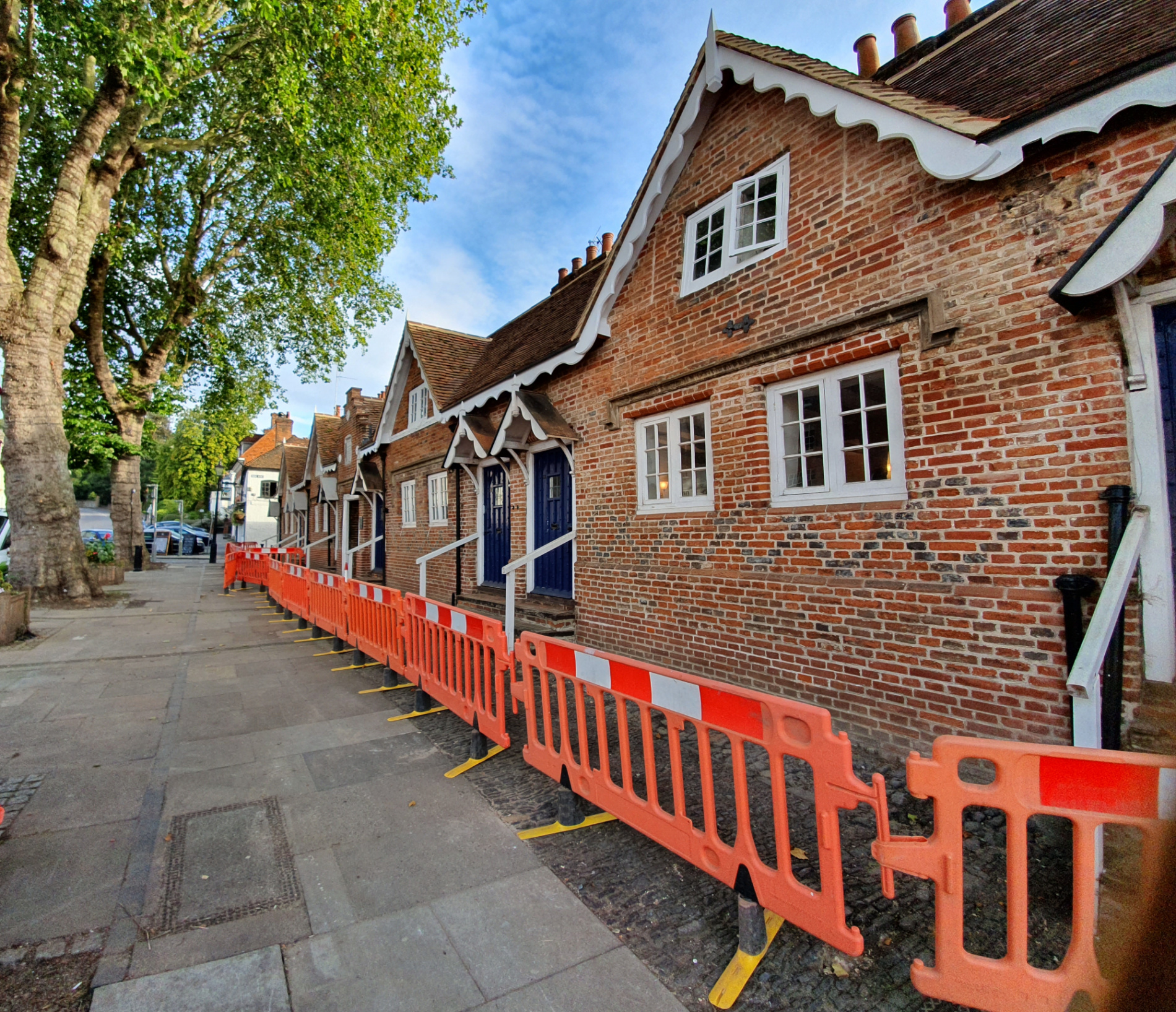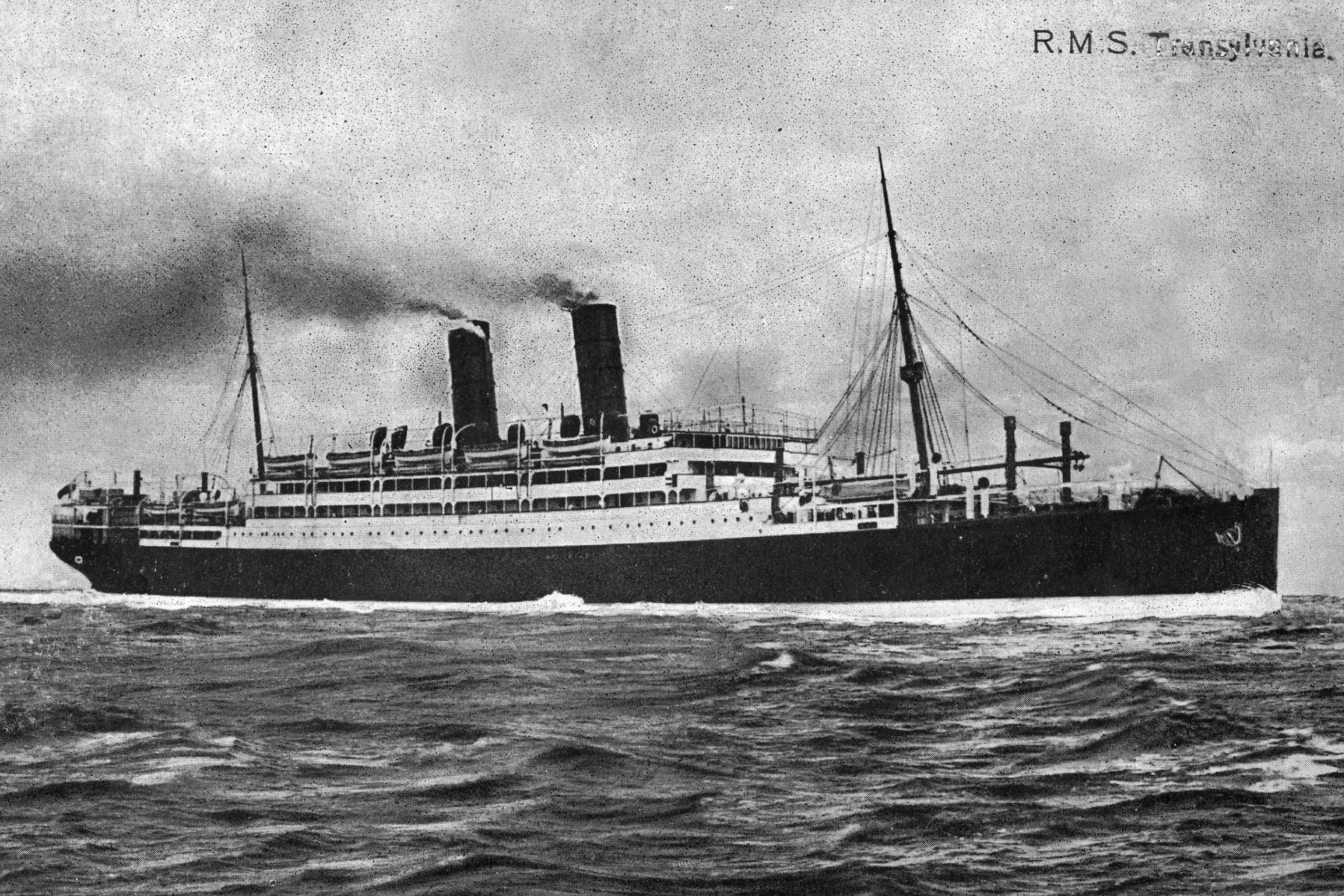Finally, all of the scaffolding has gone and the roof is finished. The almshouses are just having a bit of finishing paintwork and some internal work but, from the street, it’s starting to get back to normal.

The barrier is to protect people from the hazardous wet paint everywhere.
I decided not to go to the gym this morning given my sore ankle (and it helped) and, instead, went to Starbucks and Waitrose before settling down in my office to research the war dead, and survivors.
This week I discovered the sinking of the SS Transylvania (one of my soldiers, Charles Loveland from Frensham, was aboard, heading to Alexandria), an ex-ocean liner that had been converted to a troop ship. It was off the coast near Genoa when a German U-Boat hit it with a couple of torpedoes.

The ship was built in Greenock in 1914 for the Cunard Line and was operated by the Cunard subsidiary, the Anchor Line. Then along comes the war and the country needed a big liner to transport troops. They requisitioned the Transylvania and re-purposed her to carry troops.
Re-purposing consisted of painting it grey and blacking out the portholes. It also included the installation of a completely pointless gun. Still, I guess it may have come in handy for shooting at seagulls.
So Charles Lovelock was being shipped from Marseilles to Alexandria along with a whole load of Royal Army Medical Corps personnel, when German submarine U-63 decided it needed to be stopped.
The first torpedo struck the port engine room and the ship started taking on water and generally threatening to go down. Two Japanese escort warships were there and while one (the Matsu) tried to save as many lives as possible, the other (the Sakaki) circled the area where the submarine had been, in an effort to force it to remain submerged.
20 minutes later and U-63 fired a second torpedo, this time at the Matsu which was gradually taking on more and more survivors. She managed to avoid being hit but the Transylvania was hit a second time and immediately sunk, taking a lot of the people with it. In all 412 lost their lives.
It was a sad day for the British army but a great hit for Otto Schultze, the submarine commander. Otto was a bit of a naval hero for Germany. He managed to sink 53 merchant ships in total throughout the war as well as HMS Falmouth in 1916. He survived the First World War and was then called up for the Second one.
He survived the Second World War as well, dying in 1966 when Europeans stopped hating each other quite so much…or at least kept it hidden a lot better.
In a great moment of coincidence, a second Anchor Line ship named Transylvania was sunk by a second German submarine (U-56) in the Second World War this time only killing 36 people. It would be enough to convince me to never get on another of that name.


